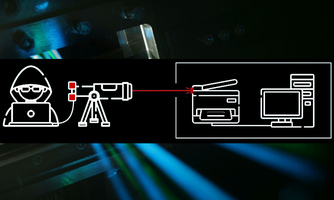 Gap in IT Security: Optical Computer Attacks using Laser Light on build-in LEDs Gap in IT Security: Optical Computer Attacks using Laser Light on build-in LEDsComputer networks in critical infrastructures are often physically isolated to prevent external access. Having neither wired nor wireless connections to the outside, they are air-gapped. By directing laser light at build-in LEDs, researchers could now establish an optical communication to these systems - bridging the gap. Data transfer then works in both directions over a distance of up to 25m. “Optical attacks are possible in commercially available office devices used at companies, universities, and authorities,” says Christian Wressnegger, head of the Intelligent System Security Group of KASTEL. In the LaserShark project, he cooperates with researchers from TU Braunschweig and TU Berlin. Press info |
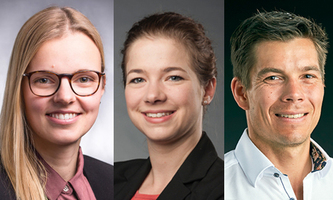 Three new professors in YIN - similarities and differences in the qualification phase Three new professors in YIN - similarities and differences in the qualification phaseSchirin Hanf, Julia Maibach and Hartwig Anzt (f.l.t.r.) are newly appointed young professors at KIT. Schirin Hanf holds a tenure-track professorship for fundamental inorganic chemistry focusing on the sustainable use of metals. After her PhD in 2019, she spent some time at the BASF postdoctoral centre in Heidelberg, before joining the YIG Prep Program at KIT and, finally, being appointed. Julia Maibach and Hartwig Anzt both have been leading a junior research group since 2017. As part of the KIT Excellent Tenure program, BMBF group leader Julia Maibach is now also tenure-track professor for interface processes. Junior professor Hartwig Anzt and his Helmholtz young investigator group focus on fixed-point numerical algorithms. |
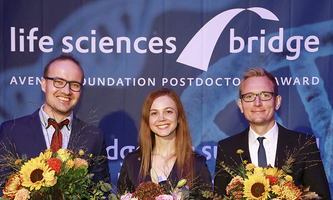 Frank Biedermann receives Life Sciences Bridge Award from the Aventis Foundation Frank Biedermann receives Life Sciences Bridge Award from the Aventis FoundationWith the Life Science Bridge Award, the Aventis Foundation supports talented young researchers and encourages them pursue to bold and unconventional scientific ideas. Frank Biedermann and his Emmy Noether group have tested an alternative receptor design principle ensuring high binding affinities for synthetic macrocyclic compounds. Thus, they recently introduced the strongest and most selective fluorescent artificial receptor for the neurotransmitter serotonin known so far. He hopes for his invention to become clinically relevant to help real patients. With Frank Biedermann, Zeynep Altintas and Lucas Jae, three postdoctoral scientists received the award in 2021. Interview with Frank Biedermann |
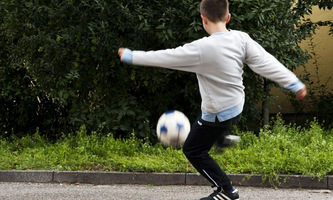 Appeal for physical activity pact: exercise for healthy adolescents during Corona Appeal for physical activity pact: exercise for healthy adolescents during Corona"Five theses and eleven recommendations for the promotion of physical activity and sports for children and adolescents against the background of the corona pandemic" is the title of a current research report at KIT. The physical everyday activity and the motor performance of adolescents decreased significantly in the second lockdown compared to the first, explains co-author Claudia Niessner. She is project manager of the nationally representative motor module longitudinal study, which together with the fitness barometer of the Kinderturnstiftung Baden-Württemberg provided the data basis. The report is an appeal to the federal, state and local governments to promote sport and physical activity concepts nationwide. |
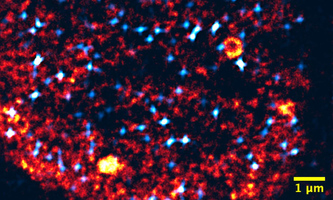 Molecular Systems Biology: How Cells Correctly Choose Active Genes Molecular Systems Biology: How Cells Correctly Choose Active GenesCells have to control precisely which genes they use to avoid wild cell growth or even cancer. Researchers have now found that the formation of transcription factories in cells resembles the condensation of liquids: liquid-coated areas of the genome allow for the adhesion of relevant gene sequences and additional molecules that eventually activate the adhering genes. “Our work shows how the biological cell organizes such processes rapidly and reliably. The computer simulations and functional concepts developed by us can be transferred directly to artificial DNA systems and can support their design,” says Lennart Hilbert, one of the corresponding authors. Molecular Systems Biology |
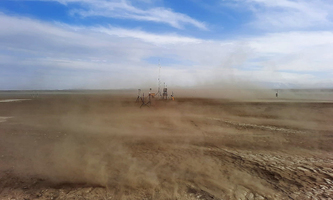 Measurement campaign: Climate impact of dust particles from deserts in Iceland Measurement campaign: Climate impact of dust particles from deserts in IcelandThe cold deserts in the far north are also among the dust sources that affect climate. In the Arctic, they influence cloud formation, glacier melt due to sedimentation, and the ocean's carbon uptake. Martina Klose took part in a measurement campaign in the Icelandic desert Dyngjusandur. "We want to find out how dust particles are emitted and transported and how they influence cloud formation," says the climate researcher. Due to their volcanic and glacial origin, in particular large particles likely differ in porosity and shape from dust from other deserts. This could affect how long dust particles remain suspended in the air. News |
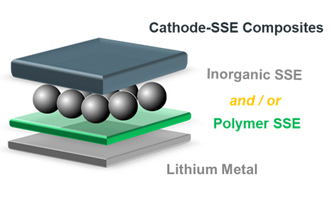 BMBF Project: Alternative Anode Concepts for Safe Solid State Batteries (ALANO) BMBF Project: Alternative Anode Concepts for Safe Solid State Batteries (ALANO)Solid state batteries can advance electro mobility: Lithium metal as the anode material and a solid state electrolyte (SSE) make it possible to increase the energy density and thus extend the range of electric cars. "The safety will also significantly improve, as the battery cells no longer contain liquid and easily combustible components," explains Dominic Bresser. "In addition, the robustness of the cells increases, making handling, cooling and system integration easier." In the joint project coordinated by the BMW PLC, partners from science and industry are looking at the entire value chain: from the selection of materials to processing and scaling to recycling. Press info |
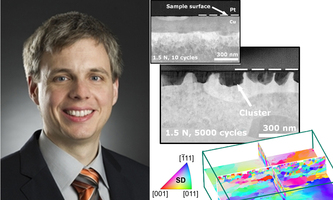 Full professorship for former YIN speaker, Emmy and ERC awardee Christian Greiner Full professorship for former YIN speaker, Emmy and ERC awardee Christian GreinerIn September 2021, Christian Greiner has been appointed Professor for Additive Manufactured Components and Microstructural Design at KIT. Congratulations! He had joined YIN with his Emmy-Noether group on “Size effects and microstructure evolution in textured metal surfaces during reciprocating sliding” in 2012. Soon afterwards, he became actively engaged first as speaker of the transdisciplinary committee and in 2015 and 2016 as representative speaker. Securing an ERC Consolidator Grant in 2017, he was greatly appreciated as senior member and adviser within the network. As professor and YIN alumnus, he will now continue his research on materials under tribological load at KIT. Profile |
 Study shows: Urban forests as cultural ecosystems reduce corona stress Study shows: Urban forests as cultural ecosystems reduce corona stressIn Karlsruhe and Rheinstetten, the number of forest visits increased significantly during the COVID 19 pandemic. Urban and peri-urban natural spaces have contributed significantly to subjective well-being, especially in a time of confinement and restriction, says Somidh Saha. He is the lead author of the study on the importance of forests as cultural ecosystems, published in the internationally respected periodical Sustainable Cities and Society. While respondents made more use of nearby sites, they placed a higher value on forests close to cities. The participatory mapping method used is also suitable for incorporating the needs of the population into the planning of urban forests. Link_more |
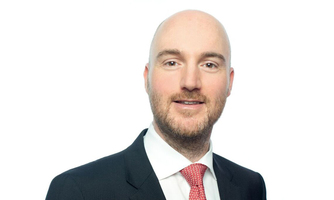 Carus Medal of the Leopoldina goes to battery researcher Dominic Bresser Carus Medal of the Leopoldina goes to battery researcher Dominic BresserFor his outstanding achievements in battery research, Dominic Bresser receives the Carus Medal of the Leopoldina – National Academy of Sciences. The physical chemist develops alternative electrode materials and electrolyte systems for lithium-based batteries and related technologies. He, thus, contributes to improving energy storage, making it more sustainable and expanding the range of storage technologies. Among the recipients of the Carus Medal are four subsequent Nobel Prize winners: biochemist Jacques Monod, biologist Christiane Nüsslein-Volhard, physicist Stefan Hell and, most recently, biologist Emmanuelle Charpentier. Leopoldina press info |
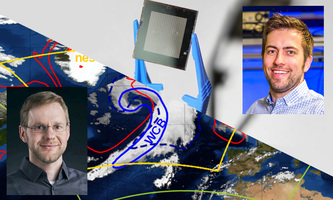 Top marks for two evaluated Helmholtz Young Investigator Groups Top marks for two evaluated Helmholtz Young Investigator GroupsChristian Grams (l.) and Ulrich Paetzold (r.) received the top grade "With extraordinary success" in the evaluation of their Helmholtz Young Investigator Groups. The Council for Research and Promotion of Young Scientists (CRYS) and the KIT Executive Board thus certified that both have conducted their research with outstanding quality and developed an independent scientific profile. Christian Grams investigates the large-scale variability of weather patterns over Europe in order to improve sub-seasonal weather forecasts beyond 2 weeks. Ulrich Paetzold looks into advanced optics and new materials for the next-generation perovskite photovoltaics. KIT news (intranet) |
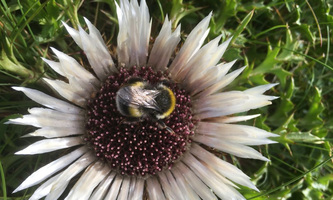 Impact of climate change and alterations in land use on European bumble bees Impact of climate change and alterations in land use on European bumble beesBumblebees make an essential contribution to the pollination of crops. Researchers at KIT and in Italy have now calculated the potential distribution of 47 European bumblebee species for the years 2050 and 2080 for seven scenarios. "It became clear that climate change poses an existential threat to many bumblebee species. However, some rare species in particular are just as severely affected by changes in land use in some scenarios," says Penelope Whitehorn. Climate protection and intelligent land management could nevertheless contribute to the stabilisation of some bumblebee species under moderate climate change. |
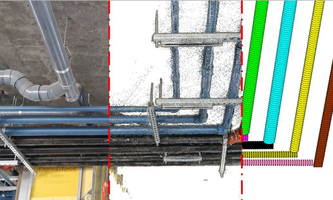 Automation in Construction: Documenting pipelines via smartphone Automation in Construction: Documenting pipelines via smartphoneA new, automated imaging method improves the current error margin in the progress of on-site pipeline work by about 70 percent. "At the same time, it reduces the overall time for data collection and analysis on site by about 30 percent," says Reza Maalek, whose team developed the new method in collaboration with the University of Calgary. To do this, the researchers use videos taken with a smartphone with an optimal number of frames to obtain sufficient accuracy. The data is evaluated using point clouds from which the pipes are automatically detected to digitally document the progress of pipeline work as well as the existing pipes. Automation in Construction |
 ZDF planet e. When forests burn - with Somidh Saha on August 8, 16:30 ZDF planet e. When forests burn - with Somidh Saha on August 8, 16:30Persistent drought increases the risk of forest fires. The aim of the interdisciplinary project "Expansion of ecological, silvicultural, and technical knowledge on forest fires" (ErWiN) is to identify and contain areas at risk and to sustainably reforest burnt forests. Researchers of the KIT, the Institute of the Fire Brigade of North Rhine-Westphalia, and the Thünen Institute in Brandenburg are involved. The ZDF science magazine planet e. shows the devastating effects of large forest fires on ecosystems and asks for protective measures. Somidh Saha develops e.g. silvicultural strategies for the regeneration of fire-damaged stands. |
 measurement campaign on radiation properties and climate effects of ice clouds measurement campaign on radiation properties and climate effects of ice cloudsCirrus clouds are thin clouds of ice at high altitudes. They form naturally over the Arctic or artificially in mid-latitudes, for example through air traffic. The aim of the CIRRUS-HL campaign is to better understand their effects on the climate. Emma Järvinen's group investigates how the radiation properties of Arctic cirrus clouds and contrail cirrus clouds differ. A measuring instrument specially developed for this purpose at KIT was now on board the HALO research plane. The ice crystals of the clouds reflect sunlight, but also radiation coming from the Earth. The results contribute to improving climate models and to developing more climate-friendly flight shedules. |
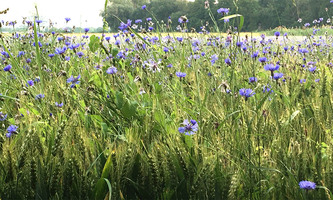 Rediscovering ancient grain varieties for the sustainable production of organic food Rediscovering ancient grain varieties for the sustainable production of organic foodMay ancient grain varieties grown organically and artisanal baked improve digestive tolerance? In the project ReBIOscover funded by the Federal Ministry of Food and Agriculture, Katharina Scherf and her colleagues want to find the answer. While cereals are among the most important nutrient suppliers worldwide, they also contain gluten and other immunoreactive components. Though only 4 % of Germans are diagnosed with dietary intolerance, about 20 % try to avoid cereals due to health issues. The main causes might be differences in highly bred cultivars and changed manufacturing procedures as many consumers report better tolerance of artisanal baked goods. project discription |
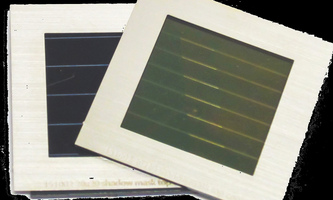 Open source tool simulates energy yield of complex photovoltaic modules Open source tool simulates energy yield of complex photovoltaic modulesPerovskite-based tandem solar cells are already achieving record efficiencies of up to 29.5 percent in the laboratory. However, the novel component architectures make the calculation of energy yield more complex. Ulrich W. Paetzold and his team have, therefore, developed an Energy Yield Calculator (EYcalc). This software uses real irradiation data and takes variable parameters into account, such as location, installation angle and the position of the sun, in order to determine the annual energy yield with hourly resolution. The open-source tool is suitable for all conventional, but above all also for highly complex solar cell architectures. |
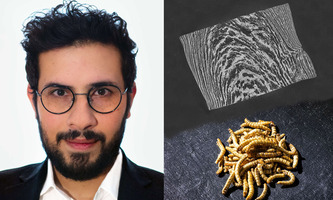 Food processing engineer Emin Azad is KIT expert for sustainable meat substitutes Food processing engineer Emin Azad is KIT expert for sustainable meat substitutesHigh meat consumption not only has a negative impact on animals and humans, but also on the environment and climate. One solution are plant-based foods, especially proteins from sustainable sources, as a meat alternative, says food process engineer Emin Azad. Vegan substitute products should be as similar as possible to real meat in appearance, smell, taste, and texture. The focus is on protein-rich foods based on soybeans, wheat, and peas, but also on fibre-rich press residues from the fruit and vegetable production. He is also conducting research into powder made from insects as a protein-rich flour substitute. |
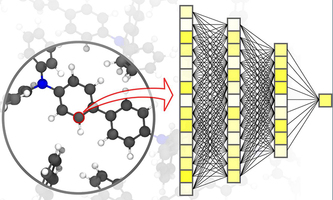 Nature Materials: Machine learning accelerates material simulations Nature Materials: Machine learning accelerates material simulationsResearch, development, and production of new materials depend on fast and at the same time accurate simulation methods. For this, a high degree of precision over various time and size scales – from the atom to the material – with limited computational effort is essential. "Compared to conventional methods based on classical or quantum mechanical calculations, a significant speed advantage can be achieved with neural networks specifically tailored to material simulations," says first author Pascal Friederich. The combination of machine learning and molecular mechanics methods could speed up material simulations even further in the future. press info |
 ForschungLehre: Appeal for sustainable support of research software ForschungLehre: Appeal for sustainable support of research softwareArtificial intelligence, high-performance computing, or the evaluation of huge amounts of data - software plays an increasingly important role for scientific success. However, the lifespan of scientific software projects is usually limited: unlike large-scale research equipment, there is a lack of funding offers for further development and sustainable provision. As Hartwig Anzt and Axel Loewe explain in the magazine Forschung&Lehre, Germany lags behind other research locations in this respect. Higher recognition for software developers and long-term prospects for the software engineering profession would be crucial. |
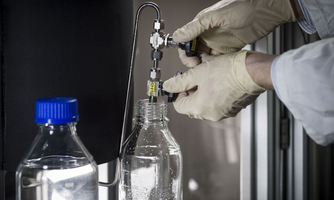 Can science learn from machine-learning? / AI for developing energy materials Can science learn from machine-learning? / AI for developing energy materialsMachine learning algorithms find recurring patterns in the data they process and use them to make predictions. Instead of focusing on numerical accuracy, Pascal Friederich inquires what patterns and correlations machine learning models actually detect. Together with German and Canadian colleagues, he extracts scientific hypotheses obtained by machine learning models using a graph representation which directly relates to real physical entities. Furthermore, within the newly established German-Canadian Materials Acceleration Centre, his research group AiMat will develop machine learning methods to simulate new materials for climate-neutral energy technologies. Friederich et al. Mach. Learn.: Sci. Technol. 2 |
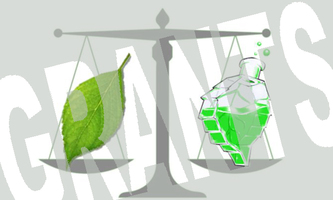 YIN Grants 2021 for innovative research ideas in chemistry and economics YIN Grants 2021 for innovative research ideas in chemistry and economicsIn an internal competition, YIN each year awards the most innovative research proposals. With the YIN Grants comes a small start-up budget for testing and further developing promising ideas. The best proposal is further recognized with the YIN Award signed by the vice-president for research. This year, the award goes to Claudia Bizzari and Somidh Saha. Their idea is to benchmark artificial photosynthesis by comparing it to the natural process. Julian Thimme likewise received a YIN Grant for his machine learning approach to high frequency macroeconomic data and Zbigniew Pianowski for developing biocompatible hydrogels for 3D printing with light. YIN Grants |
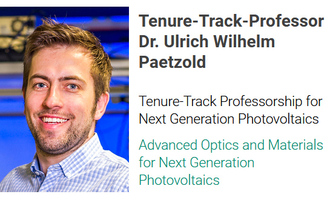 First group leader appointed W1-Prof within the KIT Excellent Tenure program First group leader appointed W1-Prof within the KIT Excellent Tenure programThe KIT Excellent Tenure measure is intended to considerably increase the number of tenure-track professorships. KIT plans to recruit ten junior research group leaders of the highest international level every year. Ulrich Paetzold has become the first independently recruited group leader who was provided a reliable career path as tenure track professor at KIT. Simultaneously, he continues to lead his Helmholtz Young Investigator Group Advanced Optics and Materials for Next Generation Photovoltaics. He is, furthermore, involved in multiple BMWi projects and publishes in highly renown scientific papers like Nature Energy, ACS Applied Materials and Interfaces, or Advanced Funktional Materials. Profile |
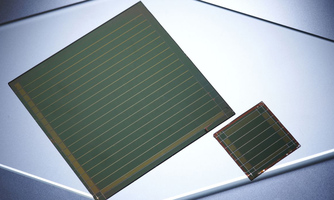 Perovskite solar modules: High efficiency over a large area with a thin layer Perovskite solar modules: High efficiency over a large area with a thin layerFrom cell to module without forfeiting efficiency? Ulrich Paetzold's team has now produced perovskite solar modules with an efficiency of 16.6% on an area of 50 square centimetres - and even 18% on four square centimetres. This makes the thin-film solar modules competitive with established photovoltaic technologies. The basis is an innovative process that combines vapor deposition of the solar cell layers in a vacuum with series interconnection of the cells by means of laser engraving. The researchers receive financial support from the German Federal Ministry for Economic Affairs and Energy and the EU's Horizon 2020 framework program. press info |
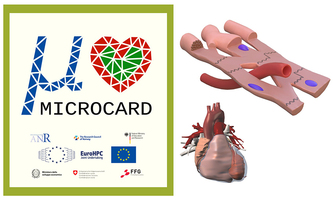 European project MICROCARD for numeric cardiac modeling on cellular scale European project MICROCARD for numeric cardiac modeling on cellular scaleIn the multidisciplinary project, 10 European partners join forces to simulate the electro-physiology of the human heart on cellular level. The new modeling tool will improve the understanding of cardiovascular diseases such as arrhythmia and the use of computer simulations for diagnosis and therapy. The Helmholtz group led by Hartwig Anzt will develop high performance numerical solvers adapted to the specific problem and the simulation ecosystem. Whereas, Axel Loewe's group leads the software integration, provision, and dissemination efforts. The 5.8-million-euro project is jointly funded by the European High-Performance Computing Joint Undertaking and the national funding agencies. microcard.eu |
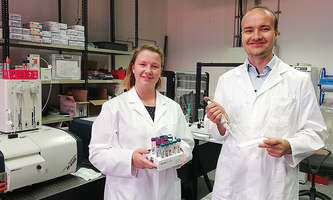 With innovative neurotransmitter detection on place 3 in NEULAND ideas competition With innovative neurotransmitter detection on place 3 in NEULAND ideas competitionWith the NEULAND innovation competition, KIT promotes original ideas and technologies on the way to spin-offs. This year, the third prize went to Emmy Noether group leader Frank Biedermann and his PhD student Laura Grimm. The two are working on the detection of neurotransmitters in biologically relevant media using fluorescent zeolite-based receptors. Their goal is to further develop neurotransmitter sensor technology in such a way that patients can test their own neurotransmitter levels at home - without the need for costly laboratory diagnostics. This would, for example, help people suffering from depression to adjust their medication according to their needs. Interview and contact |
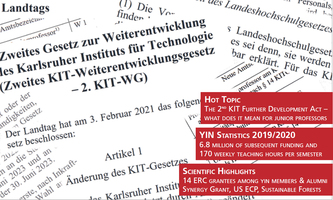 Journal YIN Insight on 2nd KIT Development Act, 12-year-rule, facts, figures, and faces Journal YIN Insight on 2nd KIT Development Act, 12-year-rule, facts, figures, and facesIn this edition of YIN Insight, the Hot Topic focuses on the 2nd KIT Further Development Act, which aims to unify the University Sector and the Large-Scale Research Sector – highlighting both the changes and opportunities for junior professors at KIT. With regard to changing laws and the pandemic, it seemed time to take a deep dive into the “12-year rule”, which affects many researchers on temporary contracts. The Scientific Highlights range from high-throughput drug screening with improved nuclear magnetic resonance, to restoring forests after fire, to exascale supercomputers. The Facts and Figures provide the current YIN metrics. YIN Insight |
